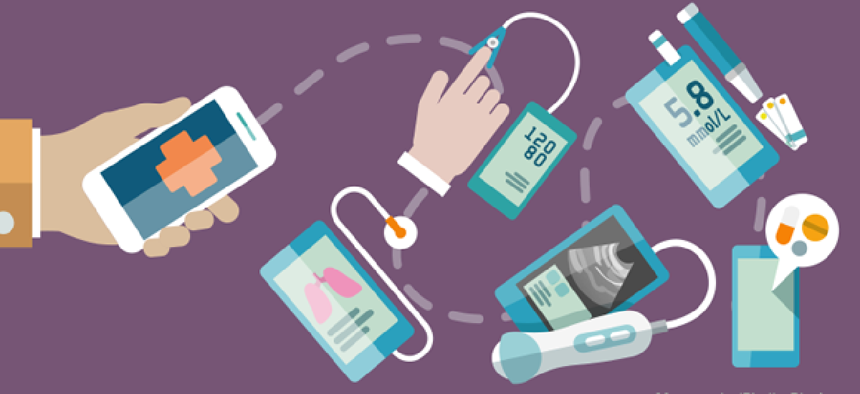FDA opens the doors for mHealth apps


Connecting state and local government leaders
In an effort to spur development of new technologies, the Food and Drug Administration said it would not regulate health apps that pose no threat to patients.
The Food and Drug Administration earlier this month issued final guidelines on its oversight of mobile health apps, showing in its statement that it would generally take a hands-off approach to regulating development of new health app technologies.
In general, the agency made clear it would not regulate software apps that pose no threat to users if they fail. Medical apps that did pose a threat includes software that would “transform a mobile platform into a regulated medical device by using attachments, display screens, sensors or other such methods,” said the FDA.
“The guidance confirms our intention to not enforce regulations for technologies that receive, transmit, store or display data from medical devices,” said the FDA’s Bakul Patel and Dr. Jeffrey Shuren said in a joint blog posting. “We hope that finalization of this policy will create an impetus for the development of new technologies to better use and display this data.”
The FDA ruling came a few weeks after the FDA green-lighted the first set of mobile medical apps, including one that allows the remote monitoring of glucose levels in people with diabetes. The application allows real-time data sharing from a continuous glucose monitor via an iPhone.
“This innovative technology has been eagerly awaited by the diabetes community, especially caregivers of children with diabetes who want to monitor their glucose levels remotely,” said Alberto Gutierrez, director of the FDA’s Office of In Vitro Diagnostics and Radiological Health, adding that the step “paves the way for similar technologies to be marketed in the United States.”
The FDA has also cleared an application for diagnosing head injuries on the battlefield. Approved last October, the Defense Automated Neurobehavioral Assessment (DANA) was developed by AnthroTronix for the Department of Defense with funding from the Navy Bureau of Medicine and Surgery and a Rapid Innovation Fund award by the Army.
DANA provides cognitive and psychological testing via an Android operating system and has three versions – a brief 5-minute screen, a 20-minute screen and a 45-minute complete assessment. The application will be used for assessing individuals’ fitness for duty and triage needs by measuring the speed and accuracy of their reaction time.
The application operates similar to a video game with cognitive efficiency tests and self-administered questionnaires. Afterward, a clinician will review the results, comparing them to the results of the baseline exercises. “In essence, measuring reaction time is like taking the temperature of the brain – like a brain thermometer,” said Corinna Lathan, founder and CEO of AnthroTronix in a press release.
This quick diagnosis of traumatic brain injury is critical. In 2013, more than 27,000 cases of traumatic brain injury were diagnosed across all four main service branches stationed around the globe, according to the Department of Defense. That number is almost triple the number of cases diagnosed in 2000, when the DOD first began recording traumatic brain injury statistics.
More testing will be done before it heads out to the battlefield. "And once we get it right, we're going to put it fairly far forward in the field," said Lt. Col. Chessley Atchison in an Army news article.




